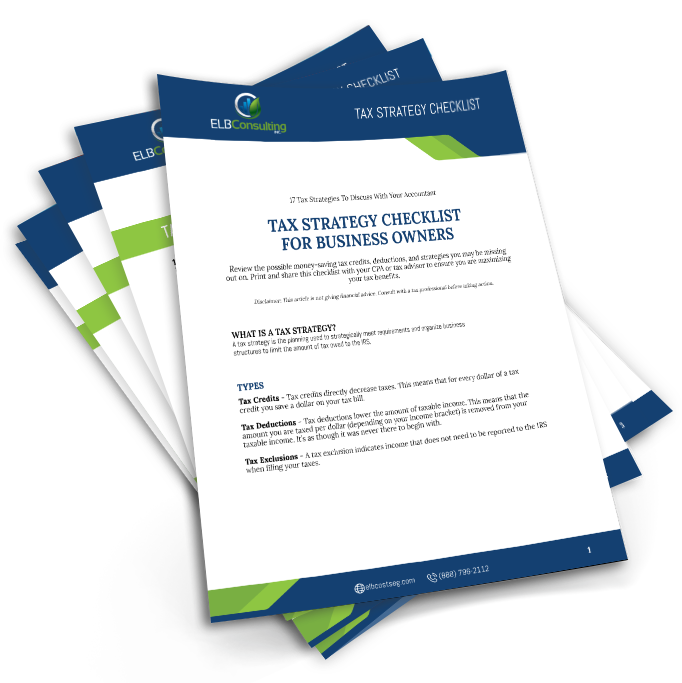In case you missed it, with legislation enacted in December 2015, federal R&D Tax Credits have been made permanent and are retroactive. This is great news!
The Research & Experimentation Tax Credit (commonly known as the R&D Tax Credit) is a business tax credit allowable under I.R.S. Revenue Code Section 41, specifically for companies that incur research and development expenses pertaining to the further development of their products and services. It was originally introduced within the Economic Recovery Tax Act of 1981 as a means to spur and motivate innovation. Because it was introduced as a temporary tax credit and expired every few years, it actually hampered its effectiveness (prior to this recent news, it had expired eight times, and been extended fifteen times).
Though now as a permanent tax incentive, firms can maximize the benefits of this credit without roadblocks; retroactively and into the future.
Who Can Take Advantage of This Tax Credit?
Unfortunately, because the implementation of these tax credits was previously hampered, most businesses believe these benefits are reserved for Fortune 500 manufacturing firms and are unaware that both federal [and state] R&D Tax Credit programs exist that may reward their investment in innovation aimed to improve their products and services.
It is critical that the market understand businesses of all sizes may qualify, across multiple industries that include; biotech, telecom, consumer products, architectural design, building materials, food & beverage, pharmaceutical, electronics, chemical engineering, aerospace, etc.
Most companies “do not” even realize they or their development efforts qualify for this tax credit benefit…
How Does the R&D Tax Credit Work?
The R&D Tax Credit provides incentives for research and development activities by reducing the tax liability through a tax credit (not a deduction) for companies that invest in research — which essentially lowers the after-tax cost of innovation activities. The tax credit is equal to a certain percentage of a business’ qualified research expenses (QREs). The tax credit can be claimed; by corporations that pay taxes, LLCs, by shareholders in S-corporations, or other types of pass-through entities that place corporate income, losses, and credits onto their owners’ tax returns.
As an added bonus, the R&D Tax Credit regulations will allow for eligible taxpayers the opportunity to “look back” to all open tax years (normally three years) for potential innovation and research credits that were not previously claimed. And to also track and earn a tax credit for these R&D activities into the future.
Who Qualifies for the R&D Tax Credit?
There are many types of business activities may qualify for the R&D tax credit and a few examples are:
- 1) developing ‘new and/or improved’ products
- 2) developing ‘new and/or improved’ operational processes
- 3) developing ‘new and/or improved’ software for operational use or to be sold to the market
- 4) assisting clients/customers with innovative solutions to solve their business problems
- 5) applying for patents on inventions of proprietary products or services. Seeing a trend here? New & Improved! It would seem like laundry detergent may be a heavy user of R&D tax credits – with all the “new & improved” associated with washing laundry
How Can You Claim the R&D Tax Credit?
A diligent and formalized evaluation by a qualified firm of your processes, products and employee functions must be completed to apply for the R&D tax credits. The process takes expertise by a firm familiar with all the nuances of the I.R.S. Code Sections 41 and 174. The essence of this evaluation process is to identify Qualified Research — which is generally broken down into four parts:
- 1) Permitted Purpose
- 2) Process of Experimentation
- 3) Elimination of Uncertainty
- 4) Technological in Nature
Many firms may offer this service, but to truly maximize the benefit you need to rely on a firm with a strong understanding of the tax guidelines, engineering and business process expertise, and the expertise to allow your firm to identify and claim your current and past tax credits, and then offer the software to track and collect R&D Tax Credits into the future.
ELB Consulting is just that firm, and we welcome the chance to discuss how your business may qualify for this essentially “government cash” benefit – and quite possibly other federal tax and energy incentives.
You may be missing out on tax benefits.
Own commercial property?
We can help you find smarter ways to depreciate your property and reduce your taxes. Tell us about yourself and we’ll see how much you could be saving.




